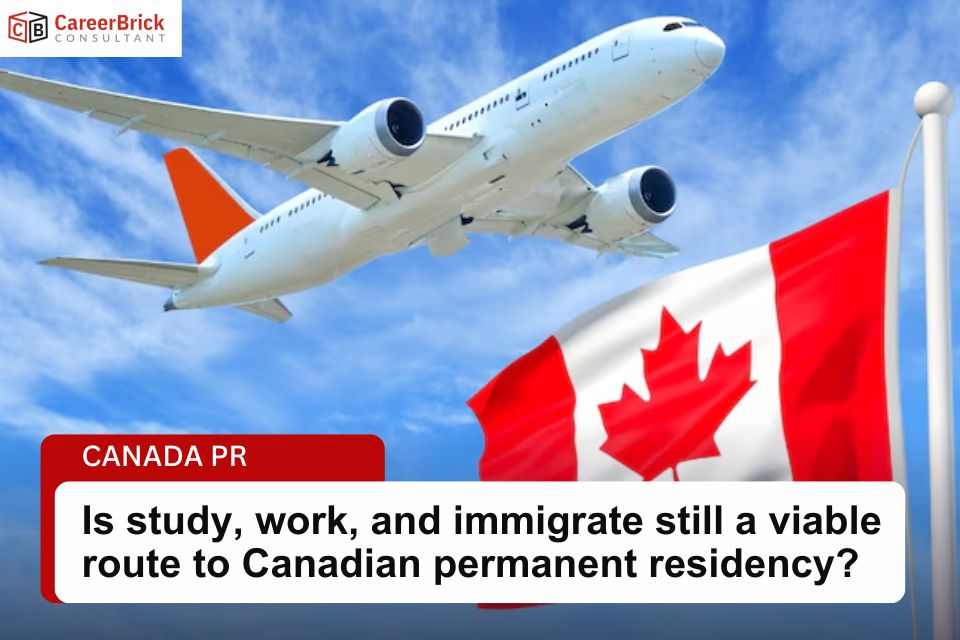As Canada’s Express Entry pool becomes increasingly competitive in 2024–2025, many aspiring immigrants are wondering whether studying in Canada is still a dependable route to permanent residency (PR). The answer remains yes—studying in Canada continues to offer valuable advantages for those aiming to settle permanently.
Why Studying in Canada Still Matters
Despite higher CRS cutoffs and tougher competition, international students retain several strong benefits when transitioning from study to work and eventually to PR.
| Benefit of Canadian Education | How It Helps |
| Extra CRS Points | Up to 30 additional CRS points for completing a Canadian post-secondary program. |
| Skill Transferability Points | Canadian work experience can earn up to 100 CRS points through the skill transferability category. |
| Access to PGWP and BOWP | Graduates can gain Canadian work experience through the Post-Graduation Work Permit and later apply for a Bridging Open Work Permit while awaiting PR results. |
| Networking Opportunities | Job fairs, co-op programs, and internships help students connect directly with employers. |
| PNP International Graduate Streams | Many provinces have dedicated PR streams for international student graduates. |
| Higher Employability | Canadian education and work experience make candidates more appealing to local employers. |
Maria’s Journey: From Student to Permanent Resident
Take the example of Maria Hidalgo from the Philippines. At 21, with a year of administrative experience, she decided to pursue a bachelor’s degree in psychology at the University of Toronto in 2019. During her studies, she completed a summer internship with a mental health NGO. After graduating in 2023, she obtained a three-year PGWP and began working full-time as a community service worker.
A year later, she entered the Express Entry pool under the Canadian Experience Class (CEC), meeting the eligibility for both CEC and the Healthcare and Social Services Category-Based Draws. With strong English proficiency and valuable Canadian work experience, Maria’s Comprehensive Ranking System (CRS) score reached 537, well above recent draw cutoffs (470–547). She successfully received an Invitation to Apply (ITA) for PR and later applied for a Bridging Open Work Permit while awaiting her PR decision.
Why This Path Remains Viable
1. Extra CRS Points for Canadian Education: Candidates with Canadian post-secondary credentials can earn 15 to 30 CRS points—often the key difference between receiving or missing an ITA.
2. Valuable Canadian Work Experience: Through the Post-Graduation Work Permit (PGWP), graduates gain open work authorization for up to three years. This experience enhances their CRS profile under both the Canadian Experience Class and Skill Transferability sections.
3. Bridging Open Work Permit (BOWP): After submitting a PR application and receiving an Acknowledgment of Receipt (AOR), candidates can continue working legally with a BOWP while waiting for a PR decision.
4. Skill Transferability Boost: Combining Canadian education and work experience with strong language proficiency can add up to 100 CRS points, greatly improving the chances of an ITA.
5. Access to Canadian Employers: Students can work part-time (up to 24 hours per week) during classes and full-time during breaks, gaining early exposure to Canadian employers and industry experience.
6. Provincial Nominee Opportunities: Several provinces, including Ontario, offer international graduate streams under their Provincial Nominee Programs (PNPs)—another reliable pathway to PR.
7. Stronger Job Market Position: Employers often prefer candidates with Canadian qualifications and local experience, making graduates from Canadian institutions more competitive in the workforce.
Planning Your PR Journey
If you’re considering immigrating to Canada, start by calculating your CRS score and comparing it with the most recent Express Entry cutoffs. If your profile isn’t yet competitive, explore ways to strengthen it—such as improving your language test results, gaining additional work experience, or pursuing higher education in Canada.
Despite recent challenges, the study–work–immigrate pathway continues to be one of the most practical and rewarding routes to achieving Canadian permanent residency.







